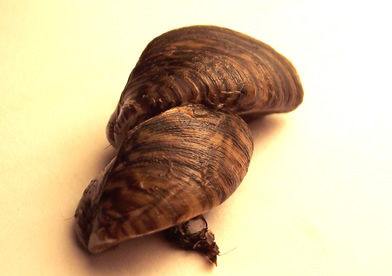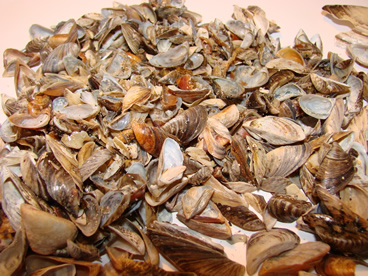 Dreissena polymorpha (Photo by Anastasija Zaiko) |
 Dreissena polymorpha shells (Photo by Anastasija Zaiko) |
Dreissena polymorpha (Pallas, 1771)
| Phylum | Mollusca | |
| Class | Bivalvia | |
| Order | Cardiida | |
| Family | Dreissenidae | |
| Genus | Dreissena | |
| Species | Dreissena polymorpha (Pallas, 1771) | |
| Synonyms | Mytilus polymorpha Pallas, 1771 | |
| Common names | zebra mussel, wandering mussel |
 Dreissena polymorpha (Photo by Anastasija Zaiko) |
 Dreissena polymorpha shells (Photo by Anastasija Zaiko) |